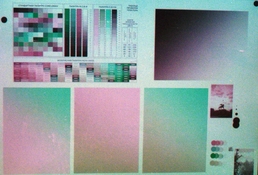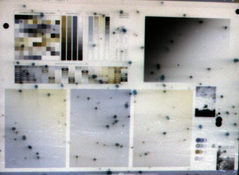I'd use Rodinal, 1+50, 9min, 20C. It will produce small amount of dye too, and we need everything
The films you've listed will work, yes.
This process will produce a negative
Well, the negatives will not be "normal" because the color rendition will be very different from standard C41. Thebcolor palette can be seen in the first post.
Yes, you need to re-expose the film, but several seconds under the sunlight will be more than enough.
You will have to use separate bleach and fix.
I don't know what "the great copper bleach is", but if it is a rehal bleach, it should work. Ferric sodium/ammonium edta bleach should work too.
1. BW dev. Rodinal 1+50 9min. 20°C
2. Fix (must be non-hardening, time will depend on what you use)
3. Bleach (time will depend in what you use)
4. Re-exposure
5. Color dev 5min. 20°C
Repeat steps 3 through 5 for 4 times, then
6. Bleach
7. Fix
Blix can be used instead of steps 6 and 7.
8. Base solution(sodium carbonate, for example, or weak NaOH ) for 5 min at 20°C
Then wash with clean water and dry.
Now it has become quite clear...
Yes, yes, now I fully understand the story.
Mr. Rudy told me about this process before, and it was mainly intended to increase the density when using expired films.
- But now you want to use this process to introduce (PPD) and (4-Aminophenol)
Yes, I think that these experiences will be useful, God willing.
OK brother .
I will carry out these experiments and I will let you know the results within two days at the most, God willing.
Note: Copper bleach is primitive bleach that consists of copper sulfate and sodium chloride.
The word great is just an adjective added to the description and not a complementary word to the noun





